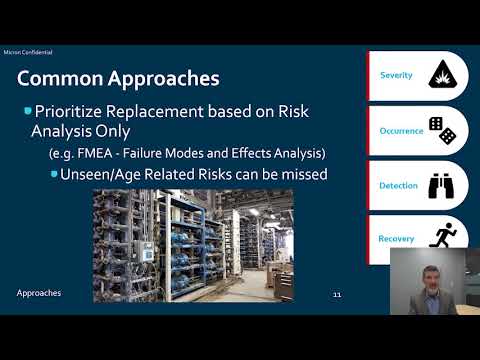Conserving Capital: The Rise of Water-as-a-Service in the Chip Sector
Share this insight
Dr. Robert Simm is a senior vice president at Stantec, leading water and wastewater treatment for Stantec’s water sector.In this interview, he explores how the water-as-a-service (WaaS) model is taking shape in the semiconductor industry, highlighting its role in helping manufacturers conserve capital, address expertise gaps, and secure critical water infrastructure.
How widely have you seen the water-as-a-service model adopted in the semiconductor industry?
In the United States, I am seeing interest in water-as-a-service in two situations. The first is small to mid-size semiconductor companies that are cash-constrained and need the infrastructure to grow. They are interested in water-as-a-service to help them conserve capital. A company can do a design-build-operate-finance (DBOF) project for them, financed by private equity. I expect that that the market will increase as more companies understand the options. Often when they look to private equity, their mind goes towards somebody investing in their company as opposed to investing in the project. Investment in the project, providing it as a service, can be attractive simply because the company avoids diluting their equity.
The second area where I'm seeing interest is private equity stepping in to provide water and wastewater services in lieu of municipal water and wastewater infrastructure. This is useful for small to mid-size communities or utilities that might not otherwise be able to support or attract an advanced manufacturing facility like a semiconductor fab.
By coming in with a DBOF model, private equity-backed firms can deliver the necessary water and wastewater capacity. That puts the community in a position to compete for and win major projects.
What are the key drivers of the adoption of water as a service?
The first is cashflow. If the manufacturer could take a dollar and spend it inside their semiconductor fab, the return on investment is much higher there than treating or recycling wastewater. The second is expertise.The technicians and engineers in a lot of these small to mid-sized companies haveexpertise in semiconductor products, but they don’t have expertise in wastewater. Specifically on the wastewater side, because they do have experience in ultrapure water (UPW), probably more than some of the suppliers.
How does it affect the overall risk for the semiconductor company?
The view of some of the semiconductor manufacturers is that they want to maintain control. However, most of the parties that are working in this space are quite expert, so I think it can actually reduce risk.
Having said that, these types of projects must be properly integrated. When treating wastewater that's being reused in the fab, the contractor needs to go to the effort to make sure that they truly understand the wastewater characteristics and ask all the right questions. It's not good enough to take the influent characteristics and simply meet the contract. It’s important that whatever infrastructure you provide for the semiconductor industry that you have the expertise to go beyond the numbers, you know what questions to ask so that you are meeting all the needs.
Could you walk me through how the financing of these project works?
On these private equity deals, the process typically starts with an industry participant bringing a project to market. They issue a bid, and the project developer will look at it and understand the economic drivers, then develop the project to what is called the final investment decision (FID) stage. Then they put together a financing package which will be a combination of equity, typically from private equity investors and debt financing. It's typically four or five to one, so it's typically 20 to 25% is equity and the rest is financed through loans.
Have you seen any specific challenges in implementing the service model?
One of the biggest challenges that I see is when people get into a deal like this, they confuse private equity for financing. If you go to the bank and you get a loan, that's financing, then you call the shots. But if you go out to the private equity, that is finance plus expertise. They're putting up the money to do your project, so they're driving the bus. That's sometimes difficult for people to understand. If a company cannot get a loan and they're not in a great position, if they want to go to private equity, they need to understand that they must give up some control. Some companies don't realise that they're not set up to do that.
What could trigger disagreements?
In terms of bidding, an entity may want to bid out certain elements of a project because they think they're controlling cost, but there isn’t always time for that. When structuring a project, we go to the people that we know that can deliver, and we make decisions on these projects for expediency and because we know that the entity that we've chosen will be there at the end. Remember that some of these service agreements span 20 years, 25 years, and the cheapest upfront might not be the cheapest overall.
How would water as a service fit into industry momentum towards zero liquid discharge?
With the right private equity player, I think it supports it. Many are aligned and have long-term relationships with suppliers, engineers and contractors that have a lot of experience, so they're bringing more than finance. From that perspective, the good ones bring a lot to the table to help encourage zero liquid discharge. The bigger companies may have experts in house, butthis is especially helpful for small to mid-size manufacturers.
Can you see outsourcing of ultrapure water treatment rising in the future, or is the risk always going to be too high?
I think it's possible but it's less likely. If you have a contamination issue through the UPW and are in a position where you have to dump product, it could be hundreds of millions of dollars. So, nobody wants to sign up for consequential damages. If there was a consequential damages clause, you'd certainly want a cap on that. You wouldn't want to do a project where the consequences are that you're out of business.
Having said that, there's some really good original equipment manufacturers (OEMs) out there that really are experts at UPW, and I think that in cases where it's specialty OEMs that bring the experience, I think it could be considered.


